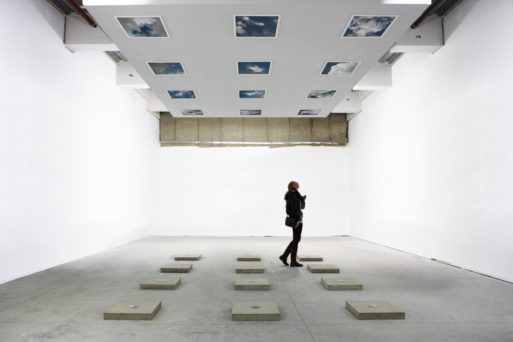
Enron Mull, 18, by David Orr
Credit: david-orr.com
David Orr is an internationally recognized visual artist and photographer whose work has been displayed extensively in the United States and abroad. He is also a sought after speaker and has presented at venues across the United States, including The College of Physicians of Philadelphia, The Director’s Guild of America, The Mütter Museum, The New School, Death Salon, Parsons School of Design, The Philosophical Research Society and UCLA.
David Orr’s oeuvre encompasses subjects ranging from photocollages of book covers to a variety of public works. But by far one of his most fascinating and evocative collections is “All That Is Solid Melts Into Air,” a series of photographs of the skies above places where people met with sudden, violent death. Begun in 2008, the project now contains over 300 photographs, each one carefully cataloged with the name and age of the person who died and the date and manner of their death. When installed, the 20-by-20-inch prints are mounted on the ceiling above corresponding concrete plinths bearing an engraved marker with the name and age of the person who died there and the GPS coordinates of their place of death.

Installation view “All That Is Solid Melts Into Air”
Credit: david-orr.com
The juxtaposition of the two is jarring — what Orr calls an example of “context creating meaning.” Without context, the prints are just pretty images of clouds. But once you understand what they represent, “everything changes,” he explains. Orr also calls the installation a “Rorschach Test for belief systems.” To some, the clouds represent eternal peace and an end to suffering. To others, they represent absence — the void left behind when a life is snuffed out. Still others see them as representing the interconnectedness of all things. (A belief that’s borne out by science, Orr says.)
Orr also says he has chosen to photograph just the skies because they represent both permanence and impermanence. As he explains in an article on the website, The Order of the Good Death,
“The skies will still be here long after structures, landmarks and addresses have become altered or disappeared entirely. What I’ve photograph will never be the same sky as when the death occurred (much like the section of river where someone has drowned), and that is an essential point of the series. Something happened, but the world moves (and has moved) on. Nature is oblivious to our predicaments, unconcerned with the ‘rightness or wrongness’ of events.”
The Triangle Shirtwaist Factory Fire
On March 25, 1911, one of the worst industrial disasters in U.S. history occurred at the Triangle Shirtwaist Factory on New York’s Lower East Side. A quintessential early-20th-century sweatshop, the factory held 146 people that day, and, as was customary at the time, the owners had locked the doors from the outside to prevent workers from sneaking out for breaks. Thus, when a fire broke out in the building, everyone inside was trapped. All 123 women and 23 men working at the time died, most of them after jumping from 8th, 9th and 10th-story windows to escape the flames. The vast majority of them were teenagers.
In 2015, David Orr traveled to New York to photograph the site of the Triangle Shirtwaist Factory Fire, now a part of the NYU campus. He took 146 photographs at the site, one for each person who died. You can see 52 of them on Orr’s website. The image below represents the death of one of the youngest workers, 14-year-old Rosaria Maltese.

Rosaria Maltese, 14, died in the Triangle Shirtwaist Factory fire in 1911
Credit: david-orr.com
When asked to explain why he photographs the clouds over sites of violent deaths, Orr has no clear explanation. Instead, he says this:
“’All That Is Solid Melts Into Air’ represents myriad things: Individual portraits of absence. An expressionistic link to a tragic occurrence. An investigation of the overt correlation between a photograph and its context. An angle of view perhaps in line with the last perspective of a person leaving this world. A Memento Mori. Collectively, a signifier of the world beyond reason.
Look up, and you will see it all yourself.”

 “All That Is Solid Melts Into Air” by David Orr
“All That Is Solid Melts Into Air” by David Orr


 First the Wealth Gap, Now the U.S. Has a Growing Health Gap
First the Wealth Gap, Now the U.S. Has a Growing Health Gap
 How to Comfort A Dying Loved One
How to Comfort A Dying Loved One
 Our Annual Seven Holiday Gifts for Someone Who Is Grieving, 2024 Edition
Our Annual Seven Holiday Gifts for Someone Who Is Grieving, 2024 Edition














